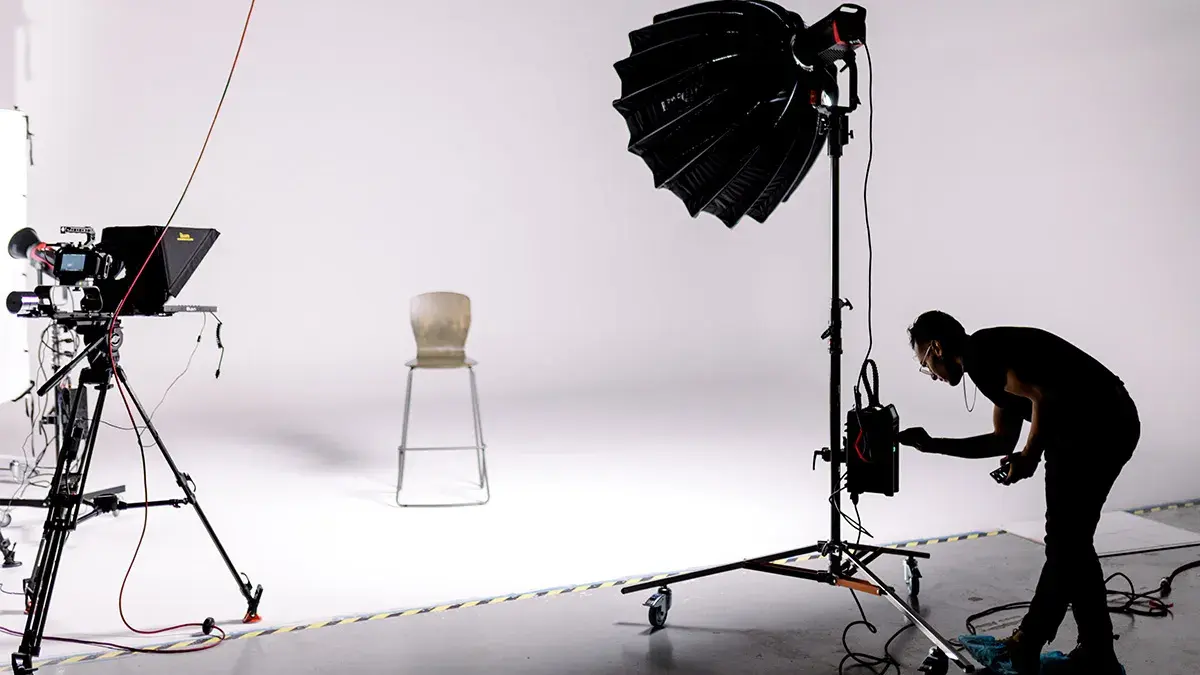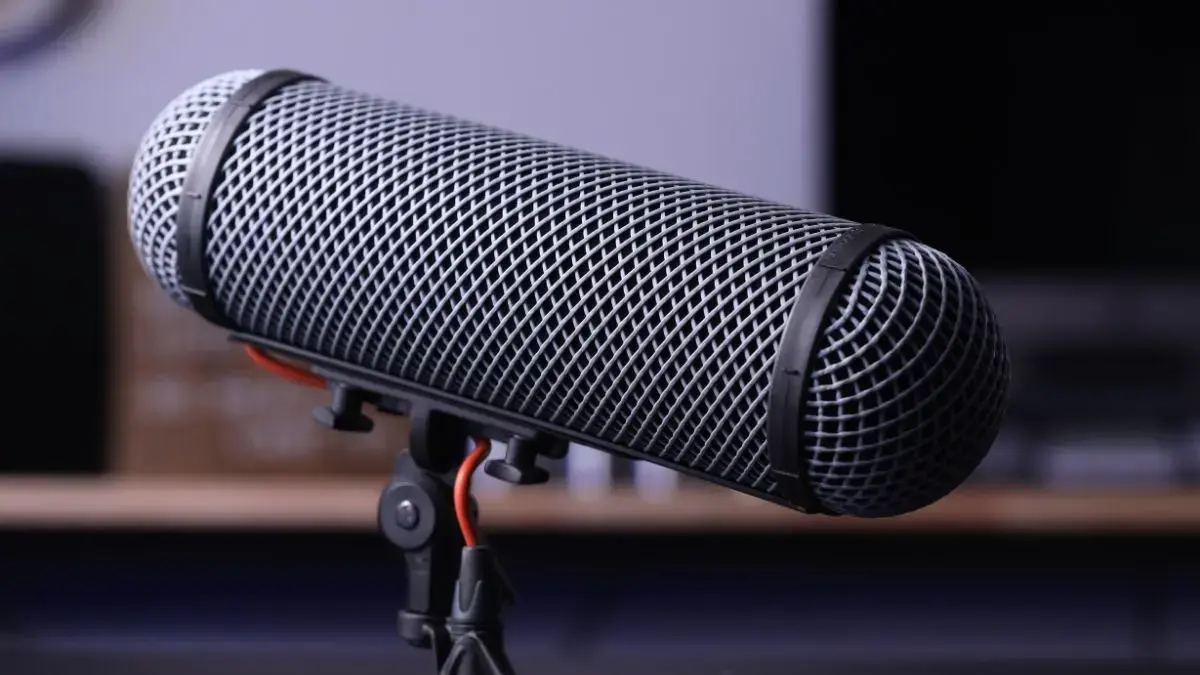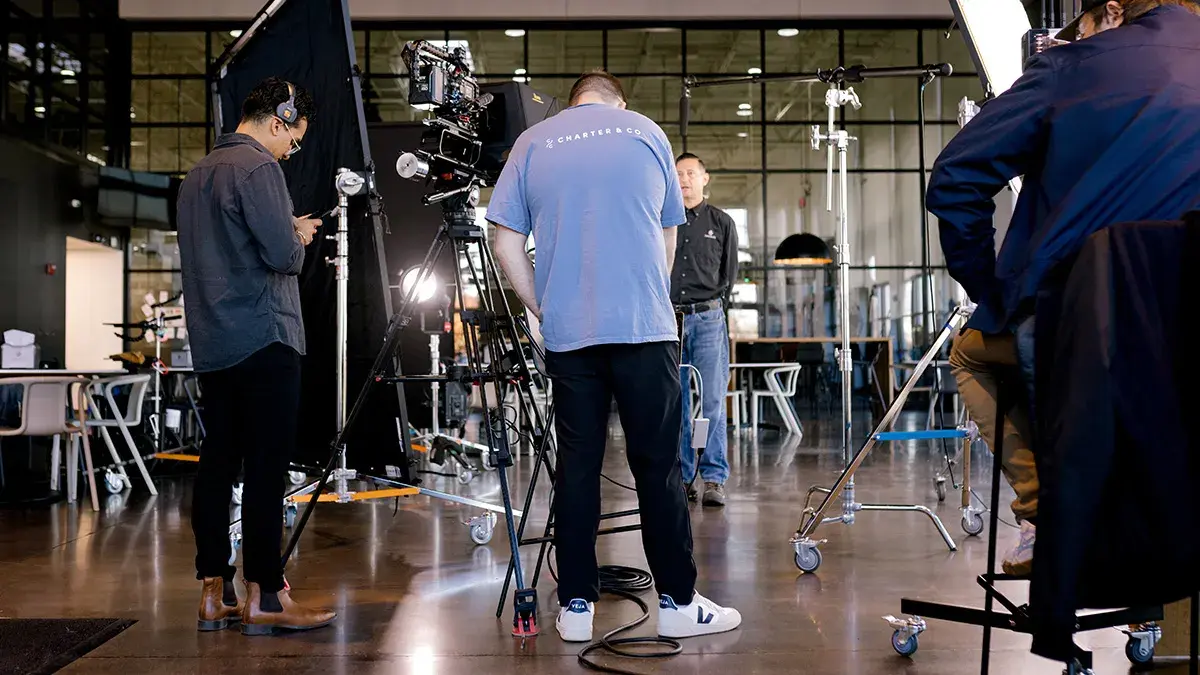Music Licensing: Essential Guide for Legal Use in Media
Music and sound effects can bring your video content to the next level. However, you can't just add "Free Bird" or "HOT TO GO!" to your video and...
▶ Video Strategy & Discovery
A video marketing strategy will keep your production cohesive and on schedule.
▶ Creative Treatments, Scripts & Storyboards
Bring your vision to life with professional scriptwriting and storyboarding services.
▶ Production Preparation
Prepare for your corporate video with professional video production services.
▶ Full Service Filming Days
Discover how Charter & Co can help you bring your vision to life through expert on-set filming services.
▶ Video Editing, Color Grading & Sound Design
Elevate your video marketing with Charter & Co’s expert video editing and post-production services.
▶ Motion Graphics
Captivate audiences with videos, ads, and social media that include high-quality animations.
▶ Licensed Music & Voiceovers
Elevate your videos with high-quality music licensing and voiceover services.
▶ Distribution Strategy & Advertising Support
Get your content noticed with a comprehensive video distribution strategy.
▶ Everything Video Marketing
Video marketing resources: What it is, why it matters, and how to do it.
▶ Everything Video Production
Your ultimate guide to video production resources: Tips and tricks for creating masterful videos.
▶ Blog
Helpful Blog resources for all of your video production and marketing needs.

High-quality videos can capture unique sights and angle your brand in a way that captivates your target audience. However, there's typically a lot more going on behind the camera than you'd expect. Understanding the most essential film equipment and its uses will help you optimize your project to effectively convey your message.
Your film production equipment can make or break your video project. Professional gear will keep your video and audio high-quality and give you plenty of options in post-production. On the other hand, poor-quality gear won't just make your videos look bad — it can also cause production delays or prevent you from capturing your videos at all. This is why it's essential to make sure you have all your essential film equipment well before your production date.
One of the most significant drawbacks of video equipment is the cost. Just one high-quality camera can set your project back thousands of dollars if you purchase it outright. Instead, most professionals rent their gear or partner with production companies that have everything they need.
Whether you're recording content for social media, TV, or in-house needs, business and video marketing must look high-quality to impress viewers and maintain your brand. To achieve this, you'll need the right type of camera and video recording equipment.
The best video camera equipment is constantly changing, with new models and accessories released every year. Quality cameras give your videos high resolution, crisp details, and manageable saturation levels. This allows you to edit, crop, and recolor your clips to your preferences without limiting video quality.
Your specific camera gear and lenses can also improve your picture quality and significantly expand your capabilities. However, most cameras are only compatible with certain lenses, and the best choices often vary by project. Always ask camera rental and production companies about their lenses to guarantee you have everything your video needs.
The most common types of camera lenses include:
Beyond lenses, the gear you use to hold your camera will help you shape, frame, and angle your video to your vision. Most productions use standard tripods that let them easily change the height, angle, and direction while keeping the camera steady. Your production may also benefit from the following camera-holding options:
Sound equipment is essential for most productions, even just to capture the atmosphere. Though some cameras come equipped with microphones, professional mics and mixers will give you a crisp quality you can actually work with. Learn more about our production process.
Your microphone should be as close to your video's subject as possible, which can be challenging during wide-angle and action shots. Your production may need to use a variety of microphone options, depending on what you plan to film.
The most common types of film microphones include:
You also need a way for your microphones to record and store audio. Professional sound mixers let you manage multiple audio channels, such as when recording from several lavaliers. This way, you can balance the volume and avoid the sound "blowing out" as you record.
You should also include the following gear in your sound equipment checklist:
High-quality lighting will brighten your scenery and make your subjects pop on the screen. However, you can't solely rely on natural sunlight or indoor lighting, as these can create undesired shadows and inconsistencies. The best lighting setups feature a variety of accessories and lights from different angles.
Professional lighting equipment includes:
Sometimes, basic film equipment isn't enough to get the shot you want. Your production may require specialized lenses, drones, makeup, and other filmmaking tools to truly capture your vision.
Drone footage is gorgeous to look at and can provide a breathtaking perspective shot. Whether you want to show the scope of your property or your team, an aerial shot can help your business marketing videos stand out to viewers — especially if you add a logo.
However, the Federal Aviation Administration (FAA) officially certifies drone pilots when capturing commercial footage. Additionally, state and local laws can restrict your flying capabilities. Fortunately, working with a professional production team that understands all applicable drone laws means you can typically avoid these obstacles.
Special effects (SFX) and visual effects (VFX) can make your videos stand out even more. However, these often require more prep work than a basic camera setup. Whether you're applying makeup, performing stunts, or adding animation, you'll typically need to plan ahead to have the right tools.
Working with experienced professionals will make this process much easier. Most SFX artists will already have or know the best type of makeup and prosthetics for specific projects. Plus, experienced VFX animators can help you plan your shots in advance and suggest motion-tracking tools.
With the right gear, you won't have to sacrifice quality for creativity. A professional production team can equip you with everything you need, whether you're interested in drones, unique lighting, or remote video productions. Get in touch with Charter & Co to discuss the most essential film equipment for your next business video project.

Music and sound effects can bring your video content to the next level. However, you can't just add "Free Bird" or "HOT TO GO!" to your video and...

Video has redefined today's digital landscape, making video marketing essential for tech and business-to-business brands in 2025. Keeping up with the...

Product demos and other marketing videos combine visuals, voice-overs, animation, and other attention-grabbing elements. They can leave strong,...